Abstract
1 The weal and flare response to intradermal histamine was measured over a range of doses in forearm skin of man. 2 The use of calipers to measure weal thickness was validated by measurement of observer and method errors. Repeated measurements at intervals of 5 min or more compressed the weals by 6% per reading. 3 Flare response reached a maximum at 5 min compared with 20 min for weal thickness and the sensitivity of the flare response was greater than the weal response at lower doses of histamine. 4 Sensitivity, lambda was comparable for the measurement of flare, weal diameter and thickness or volume. The advantage of weal thickness was in the measurement of weal formation and resorption. 5 The time course of histamine weal formation and disappearance was measured and found to have a T1/2 of 5.4 min and 87 min, respectively. 6 The T1/2 of disappearance of comparable 09% w/v NaCl solution and serum weals were 18 and 28 min respectively. 7 It is suggested that persistence of histamine weals is due to a vasoactive agent other than histamine.
Full text
PDF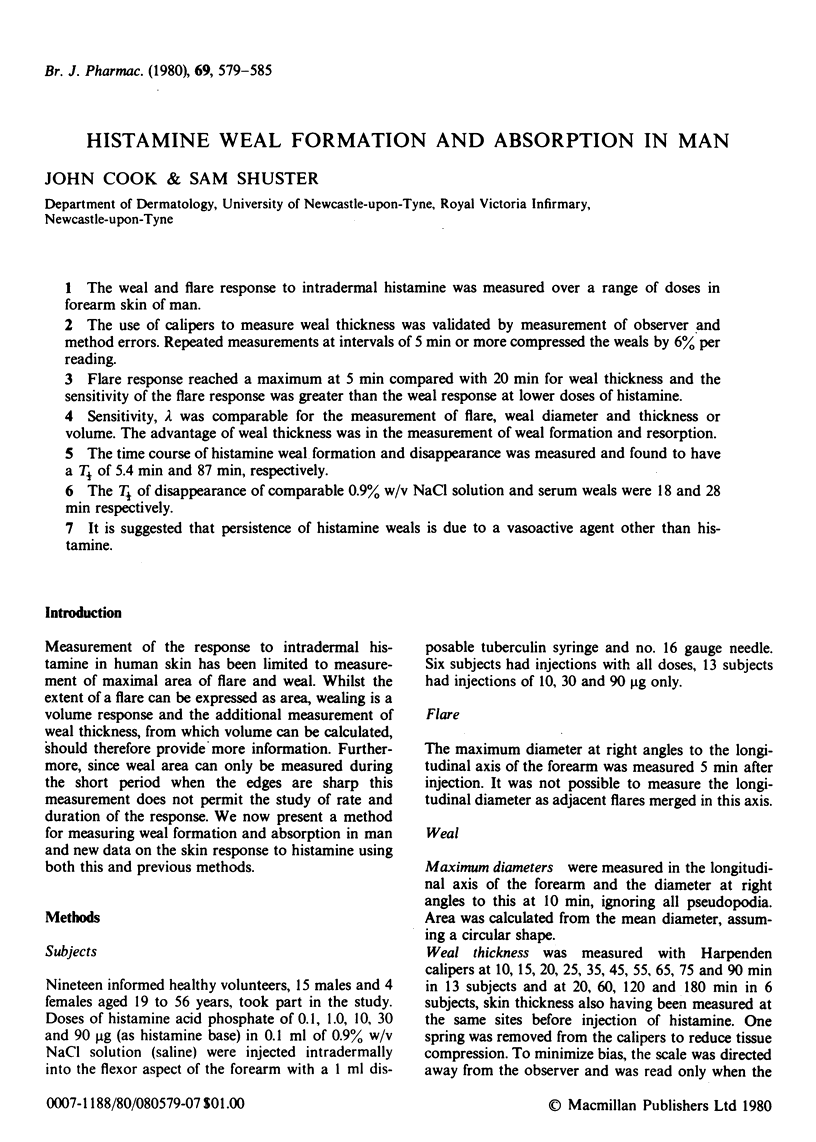
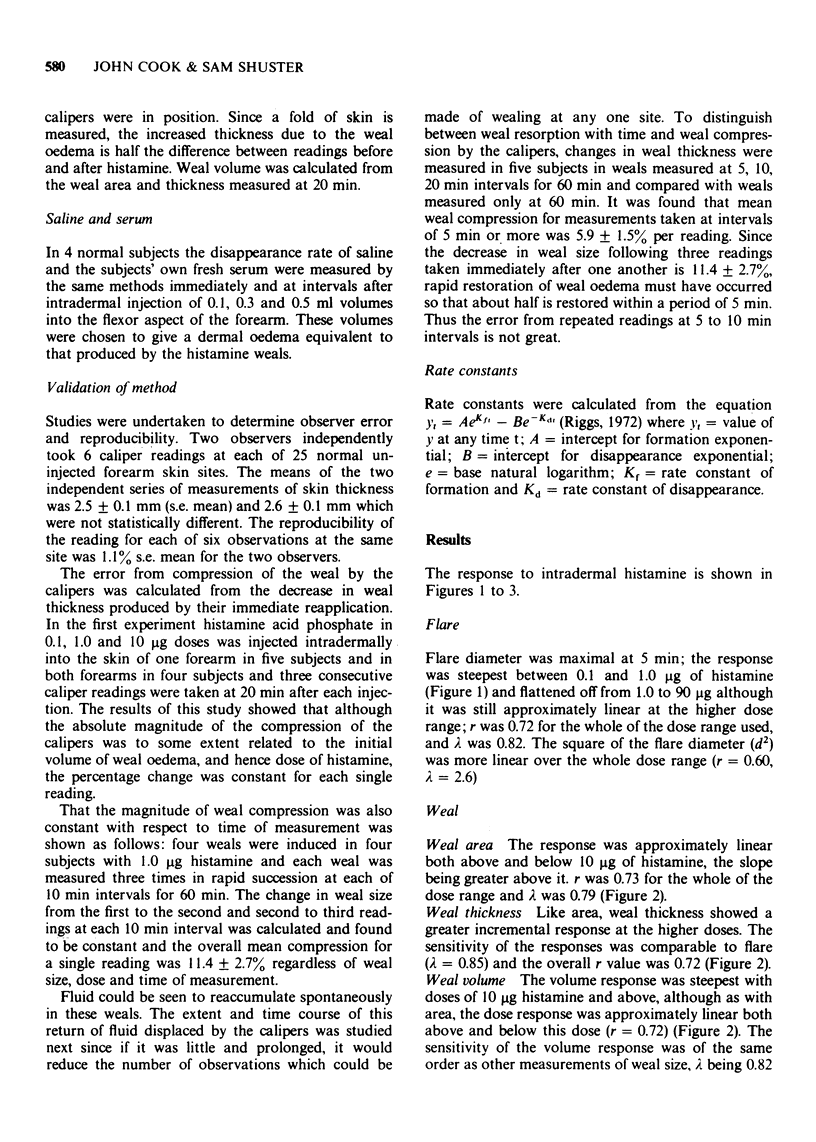
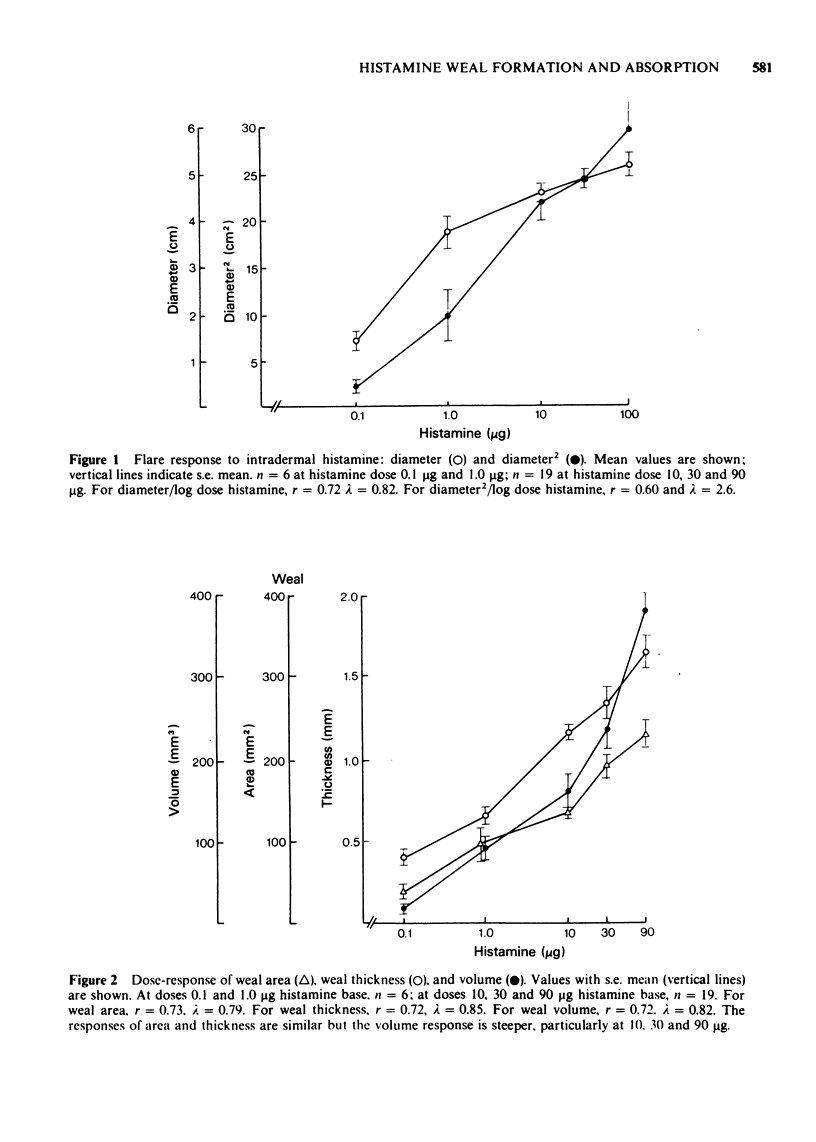
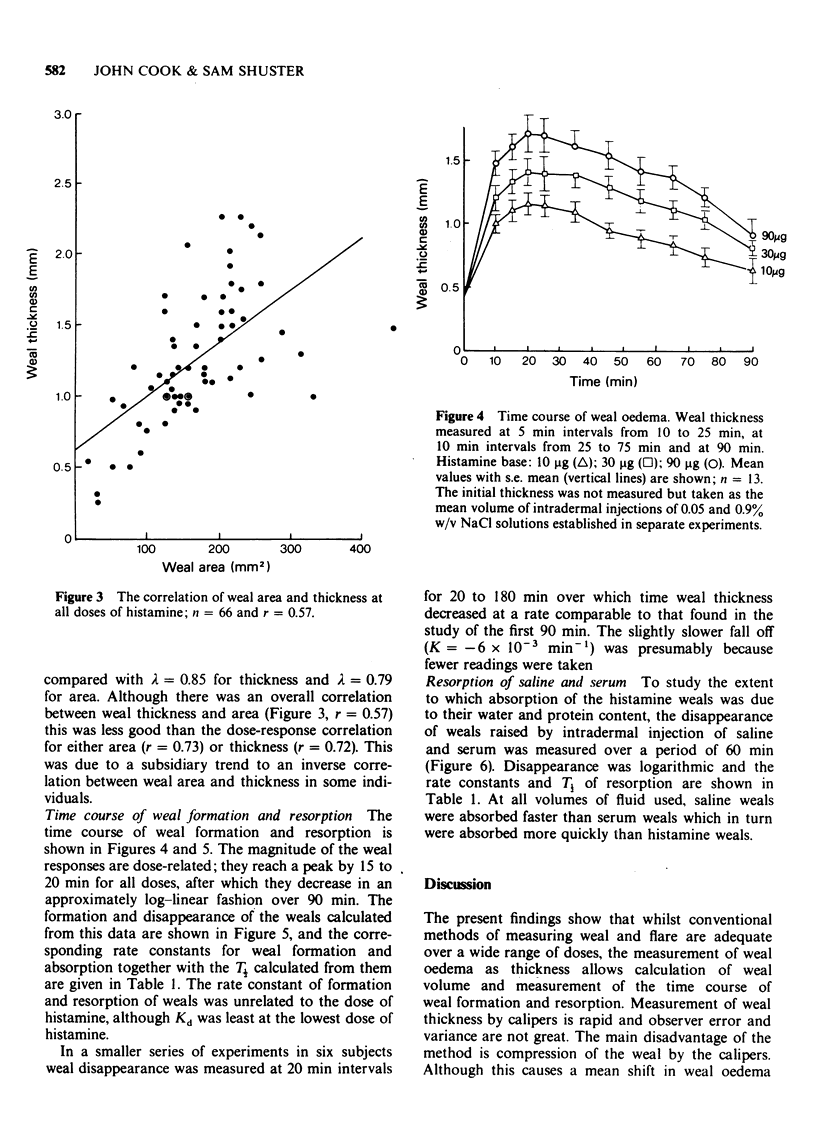
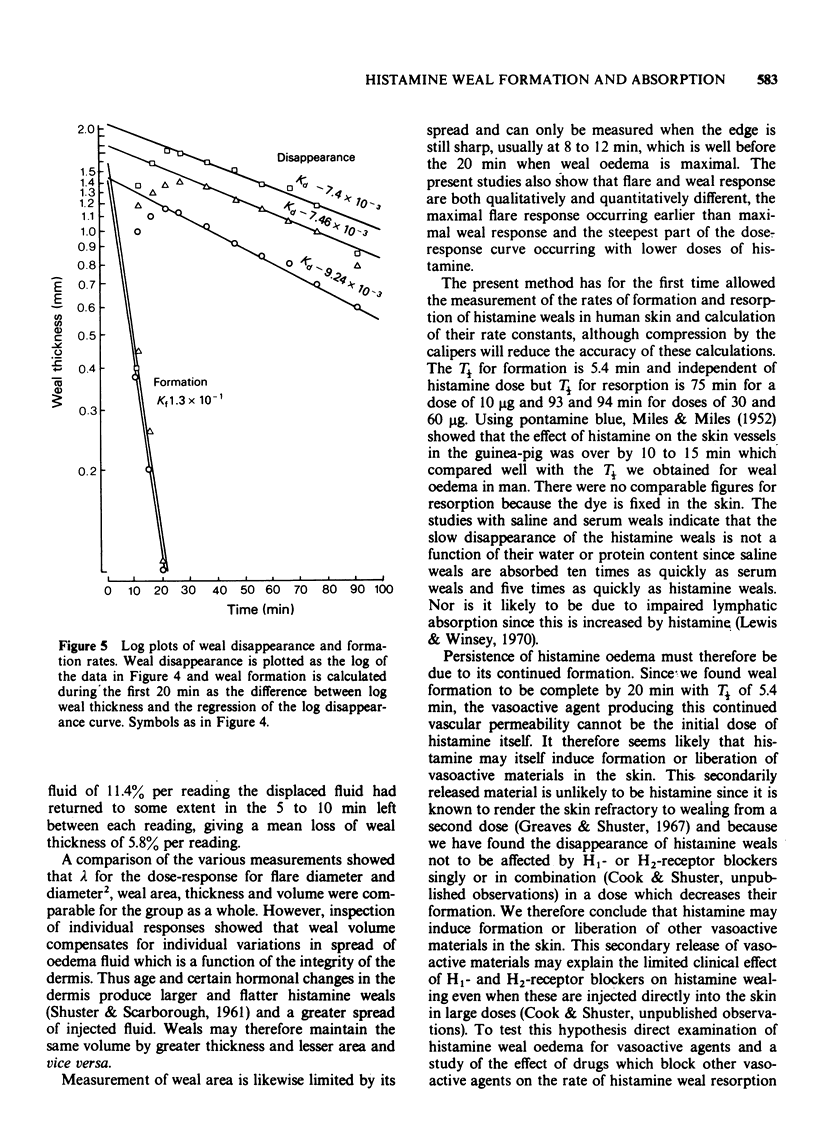
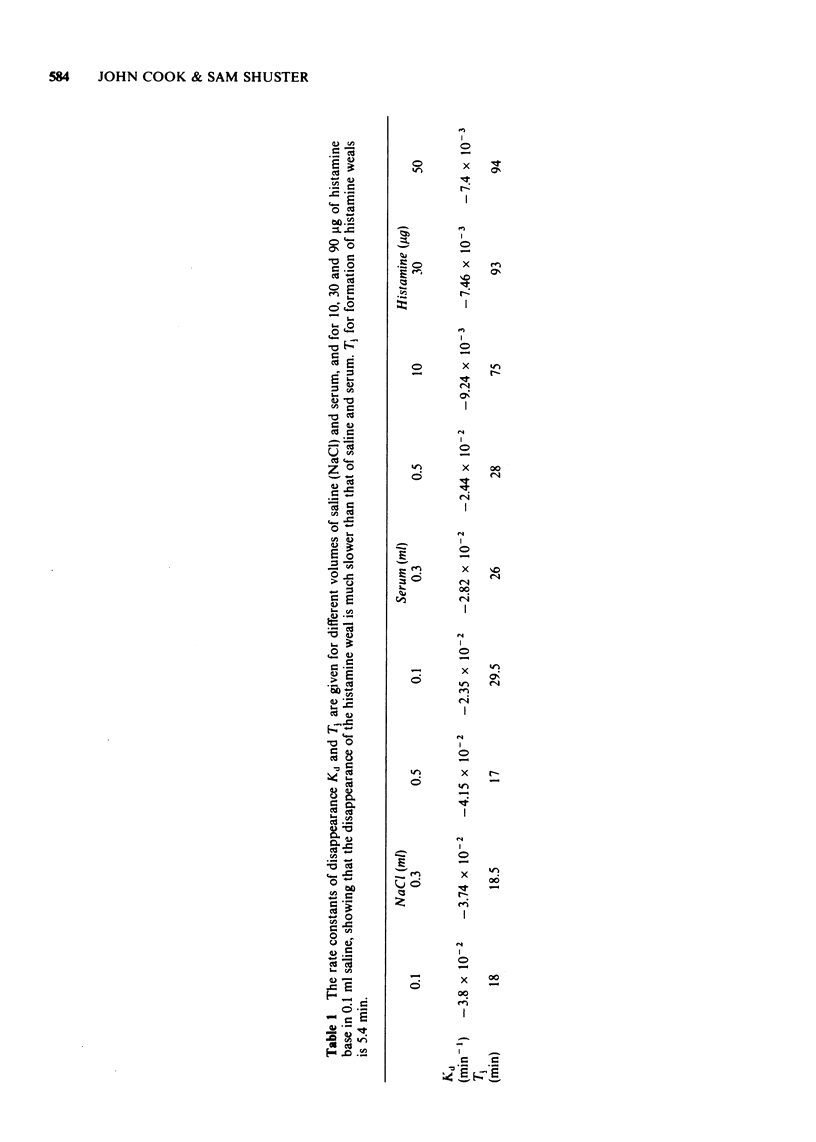
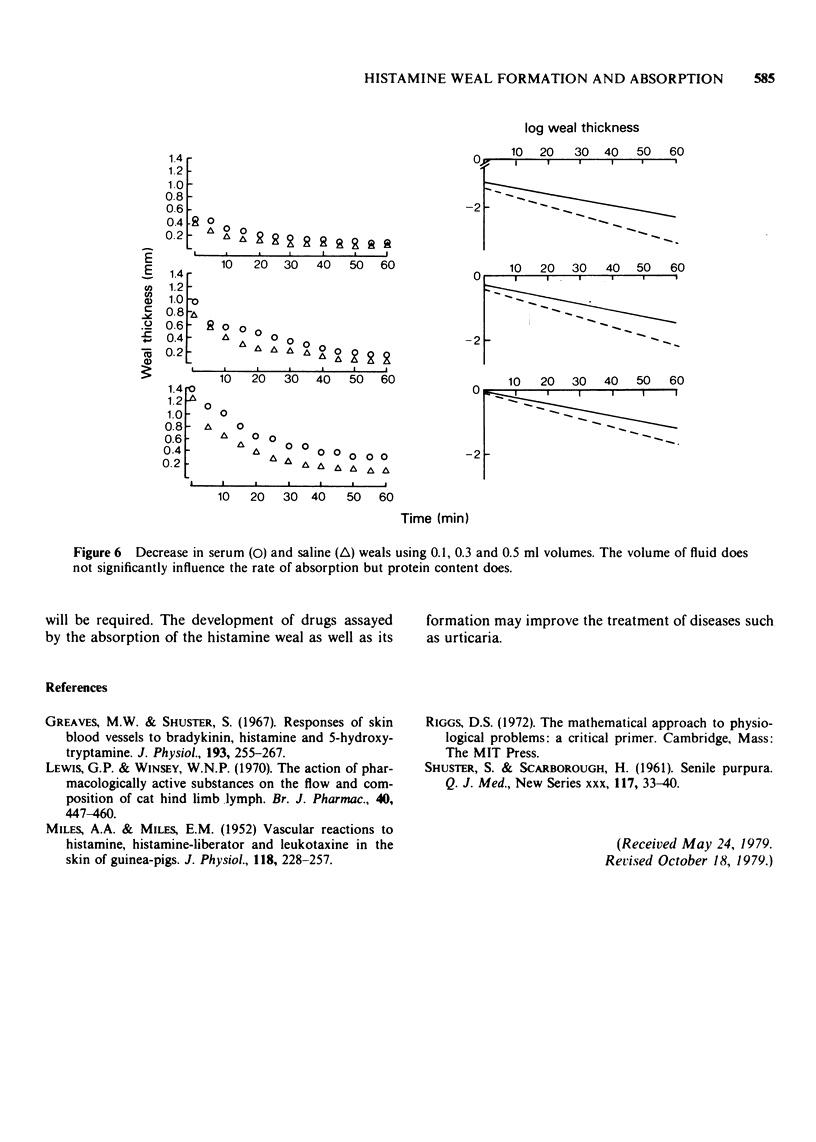
Selected References
These references are in PubMed. This may not be the complete list of references from this article.
- Greaves M., Shuster S. Responses of skin blood vessels to bradykinin, histamine and 5-hydroxytryptamine. J Physiol. 1967 Nov;193(2):255–267. doi: 10.1113/jphysiol.1967.sp008356. [DOI] [PMC free article] [PubMed] [Google Scholar]
- Lewis G. P., Winsey N. J. The action of pharmacologically active substances on the flow and composition of cat hind limb lymph. Br J Pharmacol. 1970 Nov;40(3):446–460. [PMC free article] [PubMed] [Google Scholar]
- MILES A. A., MILES E. M. Vascular reactions to histamine, histamine-liberator and leukotaxine in the skin of guinea-pigs. J Physiol. 1952 Oct;118(2):228–257. doi: 10.1113/jphysiol.1952.sp004789. [DOI] [PMC free article] [PubMed] [Google Scholar]


